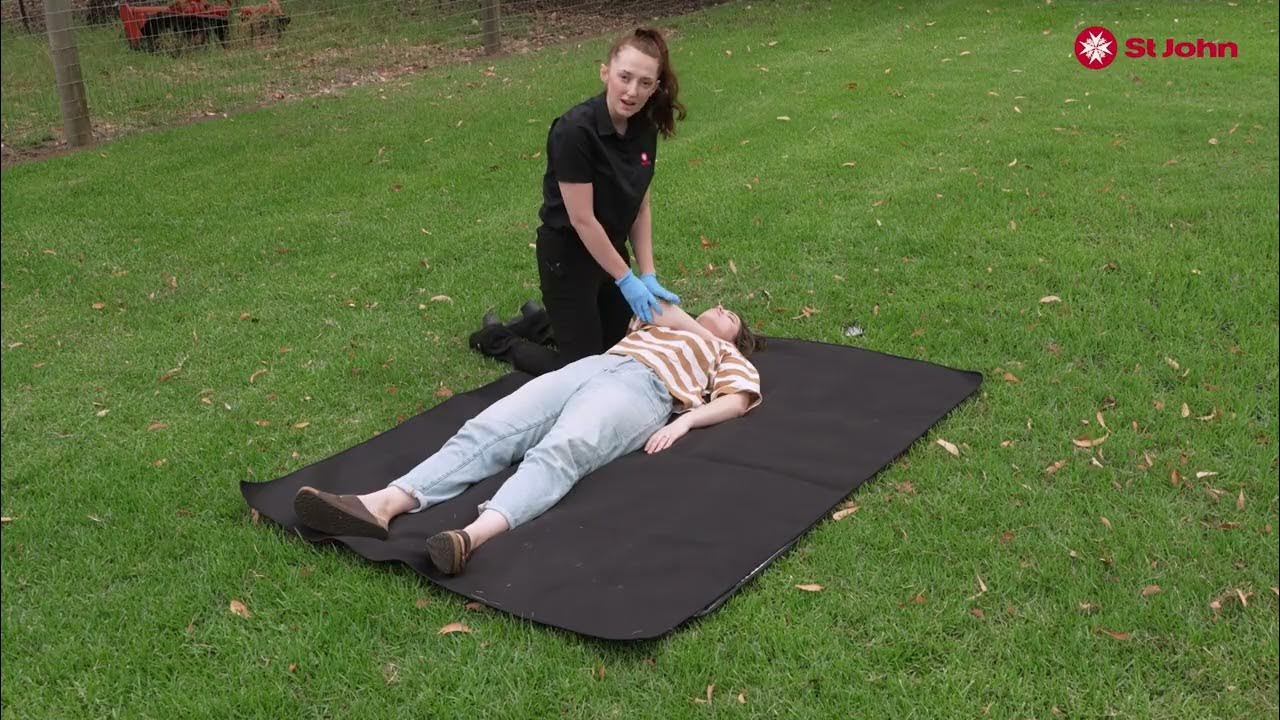How to perform CPR - A Step-by-Step Guide
Summary
TLDRThis instructional video script guides viewers on how to respond to an unresponsive person who has suddenly collapsed. It covers ensuring safety, checking for response, calling emergency services in Australia by dialing 000, locating a defibrillator, and performing CPR with proper technique, including chest compressions and rescue breaths. The script emphasizes the importance of bystander support and clear communication during a handover to maintain CPR without interruption. It concludes by highlighting the life-saving potential of CPR and promises a follow-up on using a defibrillator.
Takeaways
- 🚨 First, ensure the scene is safe before approaching an unresponsive person.
- 🔍 Check for responsiveness by asking questions and pinching their shoulders.
- 📞 Call emergency services by dialing 000 in Australia for immediate assistance.
- 🏃 Encourage bystanders to find and bring a defibrillator as quickly as possible.
- 🔄 Check the person's airway for obstructions and ensure it is clear.
- 👃 Look, listen, and feel for signs of normal breathing.
- 🆘 Begin CPR if the person is unresponsive and not breathing normally.
- 🤲 Place hands correctly on the chest for effective chest compressions.
- 💪 Push hard and fast, allowing the chest to rise fully between compressions.
- 🔁 Maintain a rate of 100-120 compressions per minute.
- 🌀 Perform rescue breaths if able, after ensuring a clear airway and mouth-to-mouth seal.
- 🤝 Seek bystander support to relieve fatigue and maintain the quality of CPR.
- ⏲ Practice smooth handovers to minimize chest compression interruptions.
- 🛡 Remember, CPR is a life-saving technique that can make a critical difference.
Q & A
What is the first step to take when you see someone suddenly collapse?
-The first step is to ensure that there is no danger around the person who has collapsed.
How do you check if the collapsed person is responsive?
-You check for response by asking them questions, such as 'Hello? Can you hear me?' and 'What's your name?', and by pinching their shoulders to see if they respond.
What should you do if the person does not respond?
-If the person is not responsive, you should send for help by calling emergency services at 000 in Australia.
Why is it important to locate a defibrillator as soon as possible?
-Locating a defibrillator quickly is crucial because it can be used to restart the heart in cases of cardiac arrest, potentially saving the person's life.
How do you check for obstructions in the person's airway?
-You check the person's airway by tilting their head back to open it up and looking for any obstructions that might be blocking it.
What is the normal sign of breathing you should look for when assessing the person?
-You should look for a normal, gentle rise in the person's chest, listen for any sign of normal breathing, and feel the chest for any sign of breathing.
When should you start CPR on the person?
-You should start CPR if the person is not responsive and they are not breathing or not breathing normally.
How do you correctly position your hands for chest compressions during CPR?
-To position your hands, go to the person's underarms with your pointer fingers, meet at the center of their chest, and place the heel of your palm down, keeping your arms straight and interlocking your other arm.
What is the recommended depth and rate for chest compressions during CPR?
-You should push about a third of the person's chest depth and aim for a rate of 100 to 120 compressions per minute.
How do you perform rescue breaths, and how many should you give?
-To perform rescue breaths, tilt the person's head back, pinch their nose, open the airway, and give one breath, then two breaths, before returning to chest compressions.
Why is it important to communicate clearly with bystander support during CPR?
-Clear communication with bystander support is important for a smooth handover and to minimize time off the chest, ensuring the person receives uninterrupted CPR.
Outlines

Cette section est réservée aux utilisateurs payants. Améliorez votre compte pour accéder à cette section.
Améliorer maintenantMindmap

Cette section est réservée aux utilisateurs payants. Améliorez votre compte pour accéder à cette section.
Améliorer maintenantKeywords

Cette section est réservée aux utilisateurs payants. Améliorez votre compte pour accéder à cette section.
Améliorer maintenantHighlights

Cette section est réservée aux utilisateurs payants. Améliorez votre compte pour accéder à cette section.
Améliorer maintenantTranscripts

Cette section est réservée aux utilisateurs payants. Améliorez votre compte pour accéder à cette section.
Améliorer maintenant5.0 / 5 (0 votes)






